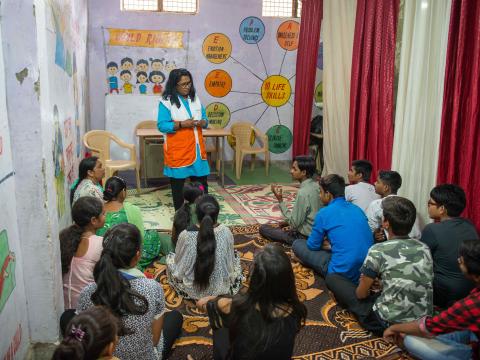15-years post Tsunami in India: Are we a resilient enough state to face a natural disaster?

By Franklin Jones - Head- Disaster Management, World Vision India
India’s capacity to manage disaster risk is challenged by its size and huge population.
The Indian Ocean Tsunami in 2004 tsunami gave way to the aspirational phrase “build back better”, and this has found its way into several disaster recovery plans and guidelines, including the United Nations-endorsed Sendai Framework for Disaster Risk Reduction. Until the 2004 tsunami that devastated countries across the Indian Ocean – including India, where over 10,000 people were killed – the region had no warning or risk assessment systems to alert people in the event of potential tsunamis. In India, too, the scale of devastation across the eastern coast exposed the country’s lack of preparation and scientific knowledge that could have mitigated the impact of the disaster.
Are we equipped better today to handle disasters and its aftermath? To an extent – Yes!
The early warning centre was one of several measures the government took to address natural disasters after the 2004 tsunami, including setting up a National Disaster Management Authority, which was notified in the Disaster Management Act of 2005.
Twenty years ago, when a super cyclone hit the state of Odisha, it left the state in tatters. More than 10,000 people died, villages were simply washed away, and over 3.5 lakh houses were destroyed. In addition, over 25 lakh people were stuck in places due to waterlogging. Now, let’s go back to this year’s Cyclone Fani, which was of the same intensity and severity that hit Odisha. This time around, the state was well-armed and was able to minimize the damage and related casualties. The journey to save millions of lives, particularly for a state like Odisha, which is prone to disasters, has not been easy. The state has progressively improved over the past 20 years and relies on information technology to enhance the safety of its citizens.
India, as a country is prone to natural disasters. Effects of climate change, the geographical location, land characteristics, multiplicity of rivers; coastal morphology and the monsoon climate render India highly vulnerable to natural disasters. It would be surprising and shocking to know that every year lightning claims more than 2500 lives and to add lighting is not included in the centrally notified list of natural disasters. The frequency of landslides, thunderstorm/dust storms are expected to shoot up due to the increase in global temperature. However, India is also known as one of the most resilient countries.
Now the challenge is to weave in the disaster risk reduction into various other development interventions.
Local governments should build resilient communities and factor in infrastructure that is customized to withstand natural disasters. A monitoring mechanism is needed to ensure that rural housing follows standard guidelines of disaster management.
Unfortunately, severe inequalities between low-and high-income countries persist. Human losses and asset losses tend to be higher in countries with lower Gross Domestic Product. The obligation and opportunities to address inequalities in terms of disaster need to be incorporated into future diplomatic agendas. Reducing risks must start with understanding the needs of the most affected.
Disaster risk management, response and climate change adaptation are never stand-alone actions.
Many individuals need to be pro-active for a common goal, as a collective safeguard against disaster. Besides, people in areas where there is a risk of multiple hazards often face discrimination based on gender, age, ethnicity, religion and other differences. Civil societies can play a major role in blending local and global knowledge through the Community Based Disaster Risk Reduction (CBDRR) approach infused with technology.
We have come a long way from the 2004 Indian Ocean Tsunami. And we have a long way to go. With each disaster, there are numerous lessons to be learnt. India needs to document best practices that were actioned when handling disasters. India also needs to put in place a knowledge management platform with modern e-learning tools.
We know the risks. We are aware of the costs. And we now have the Strategic Plan to build on our progress and scale up emergency preparedness and response capacities. Though we cannot foresee when calamity might strike us, we can at least put systems in place. In doing so, we can continue to protect dignity, preserve health and save lives.